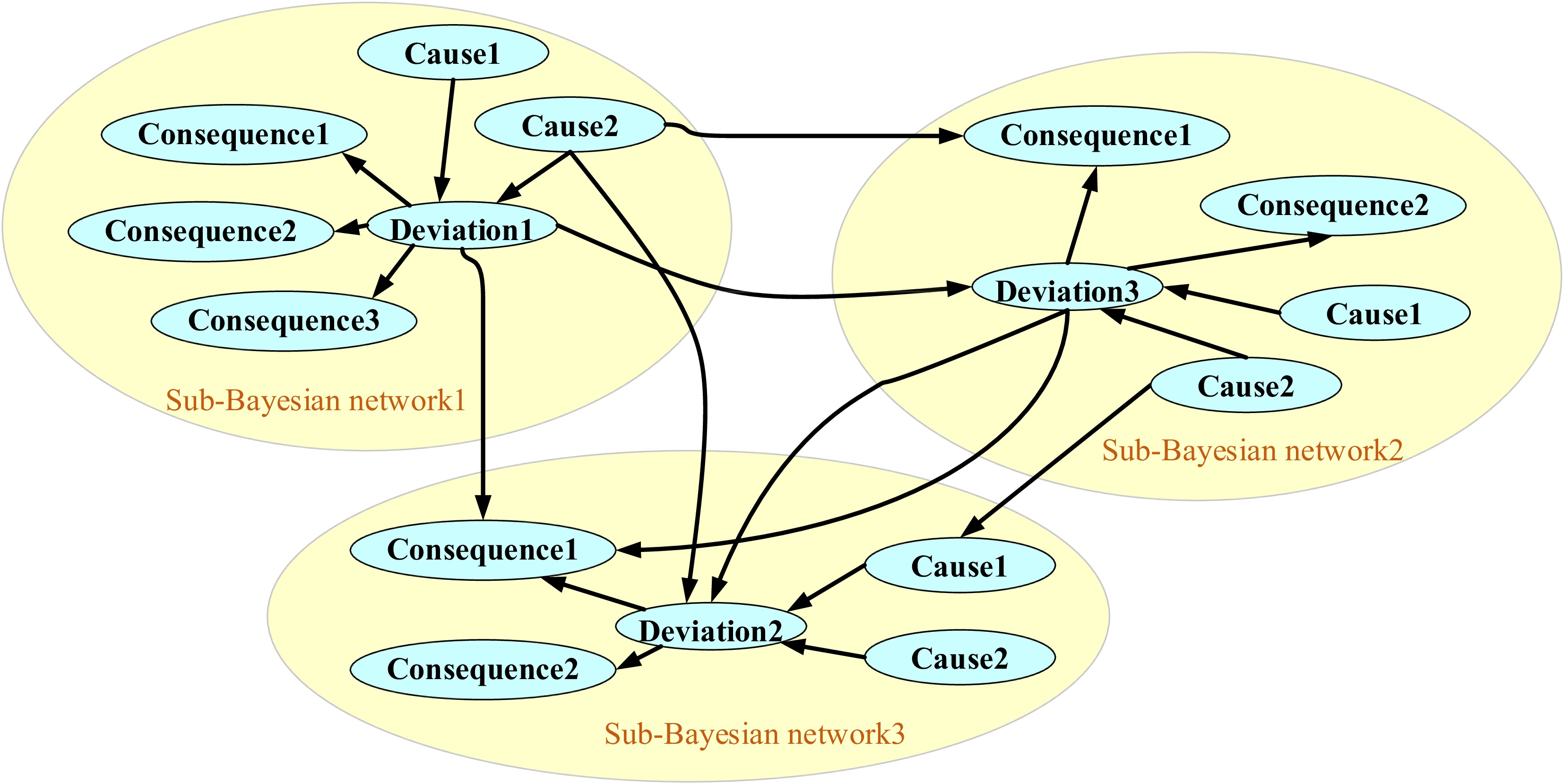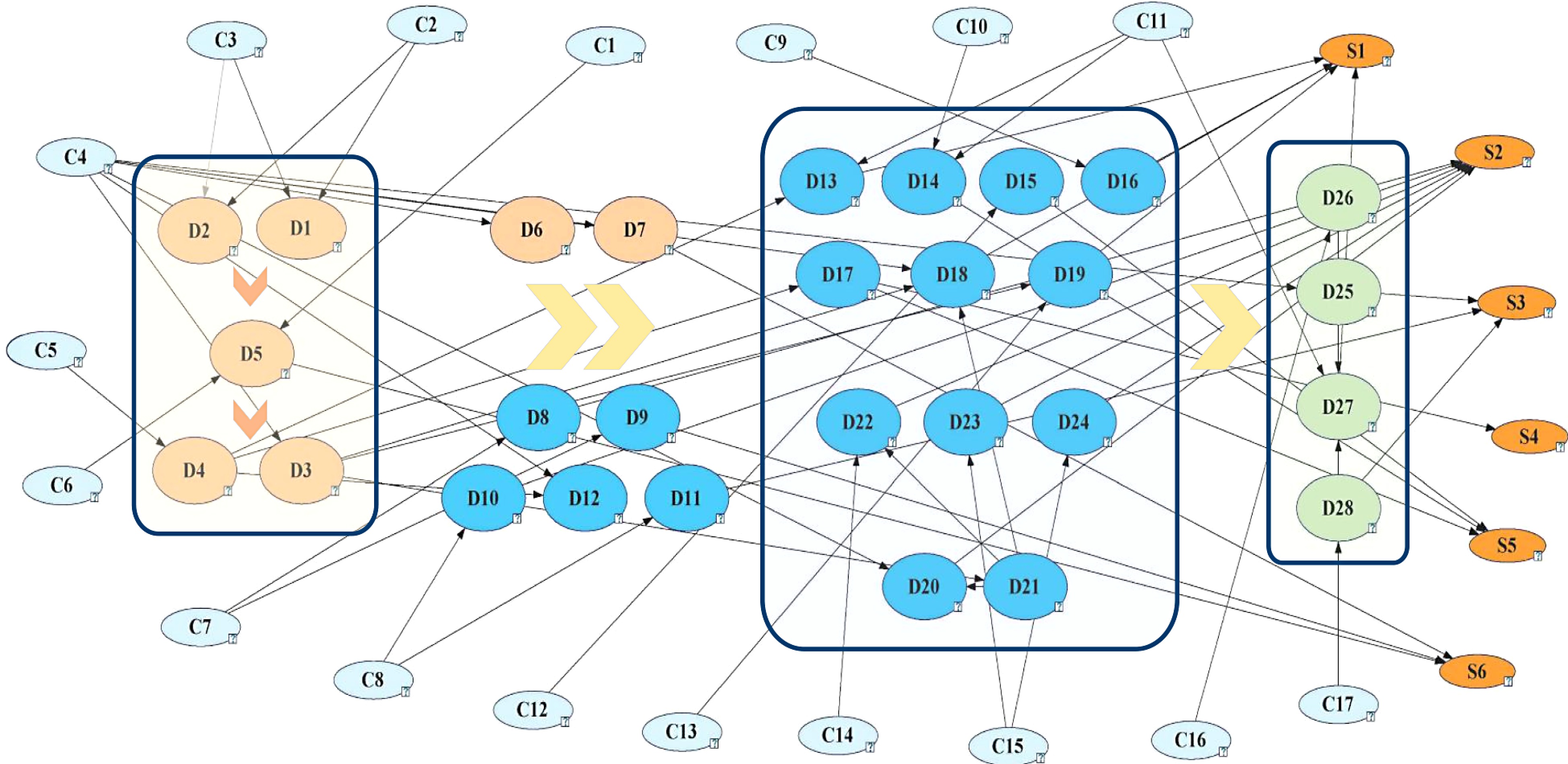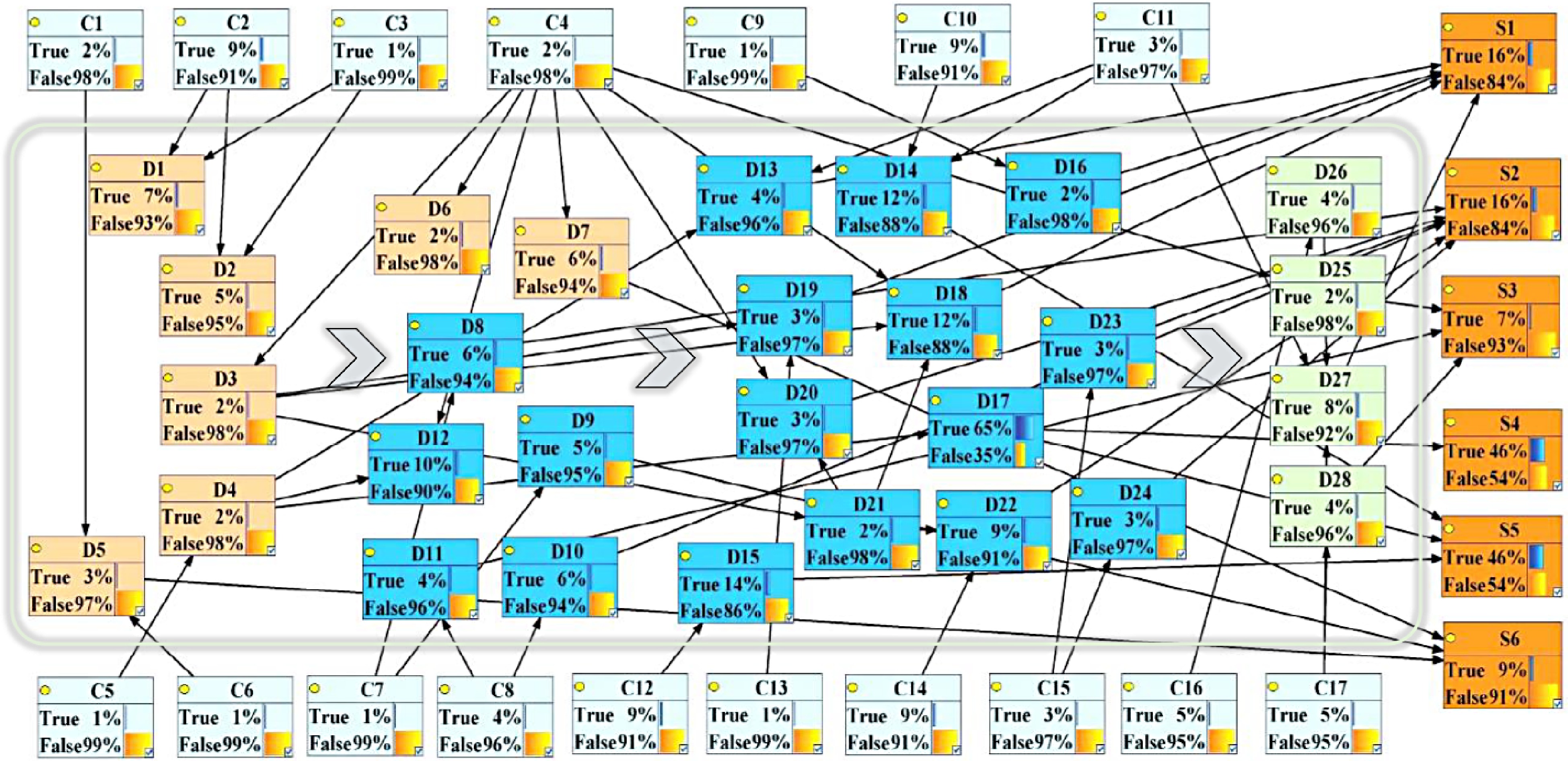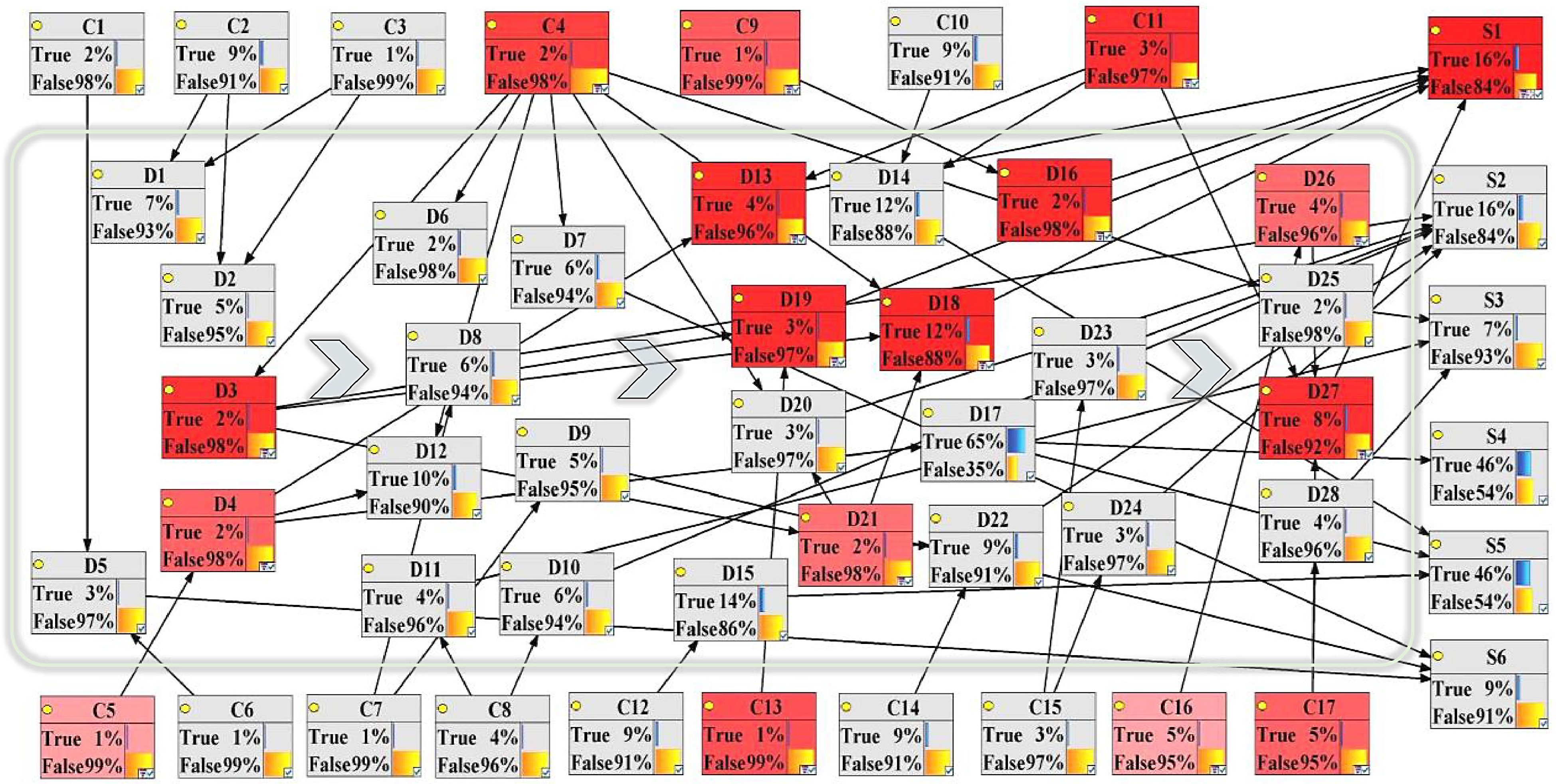-
City gas is an indispensable resource in the development of urban modernization, with the characteristics of high efficiency and low pollution[1]. In China, the demand for natural gas, especially city gas, has risen sharply in the past three decades[2,3]. In 2020, China's city gas penetration rate reached 97.87%. The residential consumption of city gas increased from nearly 8.86 billion cubic meters in 1990 to 139.8 billion cubic meters in 2020[4]. It is expected that the demand for city gas in China will continue to rise under the drive of peak carbon and carbon neutrality targets[5].
The popularization of city gas has promoted the construction of related facilities, such as gas filling stations, gas transmission pipelines, and indoor gas equipment. For example, the miles of gas pipeline in the USA increased from 913,405 km in 2015 to 958,308 km in 2021[6]. Meanwhile, complex environmental hazards such as third-party construction, bad weather, electrostatic sparks, etc. may also lead to gas pipeline disasters. In recent years, city gas explosions have occurred frequently, with 3,943 urban gas explosions occurring in China in the five years from 2016 to 2020 alone, resulting in 458 deaths and 4,424 injuries[7]. And recently on June 13, 2021, a major city gas explosion occurred in the marketplace in Shiyan City, Hubei Province, China, resulting in 26 deaths, 138 injuries and a direct economic loss of about 53.951 million Yuan[8]. In September 2021, eight people were injured in a gas explosion at an apartment building in south Dallas, USA[9]. In August 2020, two people were killed and seven injured in a gas explosion occurred in the Pikeville community in the north of Moses, USA[10].
Natural gas distribution pipeline incidents investigation and research have found that decreased gas release incident severity was associated with a faster emergency response[11]. After a major accident, emergency response is an essential way to reduce losses and avoid further damage, which requires the emergency response to be effective[12]. To this end, there have been many studies on the analysis of emergency processes. On the one hand, the emergency response performance can be improved by analyzing different stages and participants. For example, Zhou applied Petri modelling to build an emergency response model and further discussed the effectiveness under the conditions of emergency conflict[13] and action conflicts resulting from resource use[14]. Liu et al.[15] developed a stochastic Petri model for the gas leakage emergency response process in gas transmission station and identified critical response stages, respectively. Duan et al. proposed a hierarchical modeling and accuracy verification method to address the time-consuming issue of multi-organizational collaboration response[16]. They further built a cross-organizational emergency response model called TRM_WF_nets considering privacy and security protection mechanisms[17].
At the same time, many research efforts have been put on the emergency response decision-making support. For instance, Jiang et al. developed an emergency response trade-off model for toxic gas leakage events to help decision makers take action[18]. Cao et al. developed an integrated emergency response model using a meta-cellular automaton to predict the spread of toxic gases and select escape routes[19]. Chen et al. built an accident case representation model for long-distance oil and gas pipelines that can comprehensively extract the required accident information and propose an effective response to new accidents based on similar historical cases[20]. A fuzzy multi-criteria group decision support system (FMCGDSS) was designed by Zhang et al. to address subjective and objective criteria by evaluators for emergency management evaluation[21].
Besides, the composition factors of emergency response process and their coupling relationships have also been studied. For example, Yuan et al.[22] developed interpretative structural modeling (ISM) and modified Bayesian network (MBN) models to analyze the causal factors in the emergency response of oil and gas storage and transportation fire accidents. An emergency response system model based on OODA (Observe, Orient, Decide, Act) was proposed to describe the emergency response mechanism[23]. An E-net-based approach considering activity execution times, resource quantities, and preparation times was used to model and analyze the emergency response process[24]. Wang et al. used Network diagrams to construct intuitive emergency response model to study the complex relationships between internal working rooms[25].
It can be seen from current research that emergency response is a complex process that includes many factors, such as personnel, departments, and materials. Furthermore, these factors are not isolated. If one or more of these factors fails, it will affect the implementation of the emergency response and may lead to serious accident consequences. Therefore, more effort should be paid to the systematic procedures and methods addressing risks in emergency response processes[26].
Emergency response process can be seen as a work process with many operation nodes and a strict operation sequence. Once an error occurs at one process node, it is likely to lead to the failure of the entire emergency response. Therefore, the potential risks of emergency response that can be comprehensively identified and analyzed from the perspective of process safety. Process Hazard Analysis (PHA) is an extremely powerful method for process safety assessment[27−31]. HAZOP is a representative PHA method and has been widely used[32]. It helps analyze possible deviations, find root causes, and predict possible consequences, which is suitable to study the risk of the emergency response process. Scarcely, to our knowledge, does any research apply it to the field of the emergency response process. Conventional HAZOP lists deviations, causes, possible consequences, available safeguards and corresponding recommendations[33]. To better describe the level of risk, quantitative risk analysis methods have been introduced. As a probability-based uncertainty inference method, Bayesian networks have been adopted extensively[34−36]. For example, an accident tracing and prediction method based on dynamic Bayesian network (DBN), bow-tie and fishbone diagram (FD) was implemented to identify accident causes and predict evolutionary trends[37]. Through Bayesian networks, we can effectively characterize the interrelationships of various factors and quantify the risk of the emergency response process.
The purpose of this paper is to analyze the risk of the city gas explosion emergency response process and evaluate the impact of the risk on emergency performance effectiveness. Firstly, the emergency response process of a city gas explosion accident is broken down into procedure-based operations. Then HAZOP is used to comprehensively review the process and obtain deviations, causes, and results, which are considered as risk factors. In order to characterize the coupling effect among risk factors and quantitatively assess the risk, Bayesian network is introduced to visually represent the complex inter relationships among them, and then the risk level of the response is evaluated by inference and posterior probability analysis.
The paper is organized as follows: the integrated HAZOP and Bayesian network method is first illustrated. Next, modeling is performed for city gas explosion emergency process, the risk of the emergency response process is assessed with the proposed method. Results and discussions are then presented fnishing with the conclusions.
-
HAZOP was first proposed by Trevor Kletz in Imperial Chemical Industries (ICI) in the early 1970s. It has been serving as an effective technique for evaluating system hazards during process operation[38]. HAZOP analyzes the possible process deviation by determining the appropriate process parameters and guiding words, aiming to find the potential hazards that may occur in the process. HAZOP has been utilized in various fields, such as chemical production[39−42], healthcare diagnosis[43], and road safety measures[44].
Since the emergency response process can be seen as a work process with many operation nodes, HAZOP is adopted for risk analysis of the process. The brief steps are as follows:
The emergency response process is an operational process containing batch-type operating procedures. By applying HAZOP to a procedure-based operation process, the process should be divided into separate stages according to the execution of actions. The size of the selected stage depends on the complexity of the process and the severity of the hazard. Complex or high-risk processes can be divided into smaller stages[45].
Deviation is a combination of guide word and process parameter. Process parameters refer to a series of parameters (e.g., information, operation, time, procedure) characterizing the operation status of equipment, system or process[46]. Guide words are simple words used to help professionals analyze keyword variations, as shown in Table 1. The process parameters of each stage are systematically analyzed using guide words, and deviations are identified by defining situations in which the stage deviates from the normal state. Next, the possible causes and consequences of deviations are analyzed and recommended measures are given.
Table 1. Guide words for HAZOP.
Guide words Implication No The entire step is skipped completely or the specific intended action is not performed. Part of Only part of the full intent (a task involving two or more almost simultaneous actions, such as 'open valves A, B and C') is performed. More Steps are executed too fast or take too long or are executed to a greater extent than expected or are executed with too many additions. Less Steps are executed too slowly or for too short a time or not to the extent expected or the number added to the execution is too small. As well as or more than Something happens, or the operator does another action, in addition to the specified step being done correctly. Reverse Steps are executed too early or too late in the overall sequence, in other words, not in the expected order. Other than The wrong material was selected or added, or the wrong equipment was selected, read, or operated in an unintended manner, etc. Bayesian Network (BN)
-
In HAZOP analysis, various failure scenarios obtained by deviation analysis characterize the risk factors affecting the effectiveness of emergency response actions. In order to further quantify the level of risk and represent the likelihood of various types of events in the emergency response process, Bayesian networks are introduced for probability analysis.
As a directed acyclic graph, Bayesian network can quantitatively describe the uncertain interrelationships among risk factors using powerful inference capabilities[47]. When a node in the network fails, Bayesian network can help evaluate its impact on the entire emergency response process. It mainly includes two steps: establishing the network structure, and calculating network parameters.
For the network structure, the risk factors characterized by nodes and the interrelationships represented by directed arcs need to be identified first. The deviation, cause and consequence obtained from HAZOP analysis provide the corresponding causal relationships. In particular, the deviation is taken as the intermediate node, its corresponding cause as the parent node of the intermediate node, and its corresponding consequence as the child node. Hereafter, several sub-Bayesian network structures are established. There could also be causal relationships among different deviations, causes, and consequences. For example, the cause of a deviation in one sub-Bayesian network may also be the cause in other sub-networks. Therefore, the whole Bayesian network is built considering the interconnection of sub-Bayesian networks, as shown in Fig. 1.
The joint probability distribution is used to characterize the probable relationships among the nodes. For the Bayesian networks describing causal relationships, the state of each node is either true or false. Suppose there are n causes Xi (i = 1, 2, ..., n) leading to fault Y, i.e., a child node has n parent nodes. The joint probability can be expressed as Equation (1).
$ P\left( {Y = True} \right) = \sum\limits_{i = 1}^m {P\left( {{X_i} = True} \right)} \times \sum\limits_{i = 1}^m {P\left( {Y = True|{X_i} = True} \right)} $ (1) Based on the prior probability value of the root node and the conditional probability of the intermediate nodes, the occurrence probability of the target node can be predicted.
-
For city gas explosion accidents, effective emergency response can help minimize casualties and property damage. Generally, the emergency response process can be divided into three stages: 'before arriving at the accident site', 'after arriving at the accident site' and 'after the completion of emergency response' (see Fig. 2). Each stage contains many operational steps, and the execution order of the steps is shown by the arrows. Note that some of the steps are executed in parallel. Each step contains a number of emergency measures. For example, the 'Preemptive Response' step includes specific measures such as media coverage, cordoned off areas, traffic control, evacuation of residents, and identification of the scene. The details are shown in Table 2. There are many steps and measures implemented in the emergency response process, once a step or measure does not meet the specification requirements, it is very likely to cause the failure of the entire emergency response operation. Accordingly, it is necessary to analyze the possible failure scenarios within each stage.
Table 2. Specific measures for emergency response.
Stages Emergency response special measure Organize rescue Personnel placement; Material transfer Shunt the wounded Treat the severely injured people; Treat the slightly injured people Post-disaster recovery Recover gas supply; Site recovery and cleanup operation Hazard mitigation operations Gas source cut-off; Gas dilution dispersion; Environmental quality detection; Fire appraisal; Fight the fire Advance response Alerting zone; Resident evacuation; Traffic control; Determine the site conditions HAZOP analysis
-
As stated above, the emergency response process can be considered as procedure-based operations. HAZOP can be effectively used to discover the majority of event scenarios. During HAZOP analysis, deviations between the operating process and the standard procedure are emphasized.
First, each stage of the emergency response process is examined using the guide words (Table 1). Then, the deviations are obtained by considering the process parameter changes in each phase of the emergency response through the guide words. Possible causes and consequences are analyzed and the corresponding recommendations are made, as shown in Table 3. Due to space limitations, all analysis results are supplied as Supplemental Table S1. It should be noted that not all combinations of guide words and process parameters produced are meaningful deviations. For example, most emergency response processes will not be ignored, such as not rushing to the scene and not establishing an emergency command center. Hence these deviations are not included.
Table 3. HAZOP analysis for the emergency response process.
Stage Parameter Guide word Deviation Possible causes Consequences Hazard mitigation operations Operation No Flammable gas concentration not monitored 1) Emergency Personnel Paralysis
2) Situation on site not identifiedAccident expansion Reverse Not cutting off the gas source first 1) Serious damage to valves, pipelines and other facilities
2) Emergency Personnel ParalysisAccumulation combustible gas Less Inaccurate gas concentration monitoring Unreasonable gas monitoring way Accumulation combustible gas Incomplete fire extinguishing Firefighter paralysis Accident expansion Incomplete gas dilution 1) Inaccurate gas concentration monitoring
2) Situation on site not identified1) Accumulation of combustible gas
2) Personnel suffocationTime Less Fire not extinguished in time 1) Unreasonable preliminary assessment of disaster
2) Insufficient emergency rescue equipment
3) Improper command of emergency centerCasualties Procedure Other than Unreasonable fire extinguishing 1) Improper command of emergency center
2) Emergency personnel paralysisAccident expansion BN modeling
-
The deviations, possible causes and consequences obtained from the above HAZOP analysis have complex interrelationships. Therefore, it is necessary to build the Bayesian network to describe the coupling relationships of various factors.
According to the rules of HAZOP transformation to Bayesian network stated above, multiple sub-Bayesian network structures are established by taking the deviations in Table 3 as intermediate nodes, their corresponding causes as the parents of the intermediate nodes, and their corresponding consequences as the children nodes. For simplicity, deviation, cause, and consequence are represented with 'D', 'C' and 'S' respectively. The node meanings are shown in Table 4.
Table 4. Symbolic meaning of nodes.
Node Risk factors Node Risk factors D1 Incomplete alarm information D27 Accident hazards like reburning D2 Alarm not in time D28 Site cleaning recovery slow D3 Unreasonable preliminary assessment of disaster C1 Traffic congestion D4 Situation on site not identified C2 Alarm personnel panic D5 Not timely to the scene C3 Incomplete inquiry by the police receiver D6 No emergency center established in advance C4 Improper command of emergency center D7 No emergency center established in time C5 Weak operator safety skills D8 Mass evacuation not in time C6 Road traffic accident D9 Traffic control not in time C7 Improper command of emergency center D10 Warning area too small C8 Unreasonable assessment of hazard scope D11 Unreasonable division of warning area C9 Firefighters paralysis D12 Incomplete mass evacuation C10 Serious damage to valves, pipelines and other facilities D13 Flammable gas concentration not monitored C11 Emergency personnel paralysis D14 Not cutting off the gas source first C12 Unreasonable gas monitoring D15 Inaccurate gas concentration monitoring C13 Firefighter misjudgment D16 Incomplete fire extinguishing C14 Emergency search and rescue not in time D17 Incomplete gas dilution C15 Misjudgment of medical staff D18 Fire not extinguished in time C16 Post-disaster reconstruction personnel paralysis D19 Unreasonable fire extinguishing method C17 Incomplete leak stoppage and repair of gas pipeline D20 Improper placement of personnel S1 Accident expansion D21 Insufficient emergency rescue equipment S2 Casualties D22 Late treatment for the wounded S3 Affecting the lives of residents D23 Incorrect treatment S4 Personnel suffocation D24 Unreasonable distribution of wounded S5 Accumulation of combustible gas D25 Gas supply not restored S6 Delayed emergency rescue D26 On-site cleaning recovery incomplete From Table 3, it can be seen that there are also various causal relationships among the different causes, deviations, and consequences. As a result, multiple sub-Bayesian networks of the emergency response process are shown in Fig. 3. For example, the deviation of 'Unreasonable preliminary assessment of disaster (D3)' may lead to 'Insufficient emergency rescue equipment (D21)', which in turn may lead to 'Improper placement of personnel (D20)', 'Late treatment for the wounded (D22)' and 'Fire not extinguised in time (D18)'. Another example is that 'Emergency personnel paralysis (C11)' is the common cause of 'Flammable gas concentration not monitored (D13)', 'Not cutting off the gas source first (D14)', and 'Accident hazards like reburning (D27)'.
Finally, four experts including the safety manager, operator, maintenance technician and supervisor are chosen to assign probability value (0~1) to all input nodes and arcs. The probability values include the prior probabilities of the input nodes as well as the conditional probabilities, as shown in Tables 5 & 6. Only part of the conditional probability table is shown due to space limitation. The posterior probabilities of accident risk values were obtained by entering the risk values into the GeNIe[48] Bayesian network modeling program.
Table 5. Input node prior probability.
Node State True False C1 0.02 0.98 C2 0.09 0.91 C3 0.01 0.99 C4 0.02 0.98 C5 0.01 0.99 C6 0.01 0.99 C7 0.01 0.99 C8 0.04 0.96 C9 0.01 0.99 C10 0.09 0.91 C11 0.03 0.97 C12 0.09 0.91 C13 0.01 0.99 C14 0.09 0.91 C15 0.03 0.97 C16 0.05 0.95 C17 0.05 0.95 Table 6. Conditional probability of intermediate node D2.
C2 True False C3 True False True False True 0.6 0.4 0.4 0.01 False 0.4 0.6 0.6 0.99 -
The results obtained from the HAZOP analysis are qualitatively and quantitatively characterized by Bayesian networks, as shown in Fig. 4.
It can be seen that the root nodes of 'Alarm personnel panic (C2)', 'Unreasonable gas monitoring way (C12)', 'Serious damage to valves, pipelines and other facilities (C10)' and 'Emergency search and rescue not in time (C14)' are more likely to occur, which largely affects the effective operation of the emergency response process. It is also apparent that among the deviations, the possibility of 'Incomplete gas dilution (D17)' is the highest, followed by 'Inaccurate gas concentration monitoring (D15)', 'Not cutting off the gas source first (D14)' and 'Fire extinguishing not in time (D18)'. D17, D15, and D14 are all related to the gas source, which indicates that in the process of an emergency response, if the gas source is cut off timely, the accident can be largely avoided. Besides, deviations such as 'Incomplete mass evacuation (D12)', 'Late treatment for the wounded (D22)', 'Accident hazards like reburning (D27)', 'Mass evacuation not in time (D8)', 'Warning area too small (D10)' are determined by the operation of interdepartmental assistance and conflict avoidance. As for the consequences, the possibilities of 'Accumulation of combustible gas (S5)' and 'Personnel suffocation (S4)' are high, followed by 'Accident expansion (S1)', 'Casualties (S2)', 'Delay emergency rescue (S6)' and 'Affecting the lives of residents (S3)'. This indicates that during a city gas explosion emergency response process, two most likely risk scenarios are 'Accumulation of combustible gas (S5)' and 'Personnel suffocation (S4)'. In other words, complete protection should be given for on-the-spot rescuers during the emergency response process.
Note that the possibility value is assigned on the basis of expert experience. The event probability for each emergency rescue differs due to changing scenarios. Hence the node evidence should be updated with an abnormal event, such as environmental factor change or non-compliance with the procedure implementation. For example, if 'Incomplete gas dilution (D17)' occurs simultaneously with 'Serious damage to valves, pipelines and other facilities (C10)', the probabilities of 'Accumulation of combustible gas S5' and 'Accident expansion S1' will change accordingly. In this case, set P (Incomplete gas dilution (D17)) = true and P (Serious damage to valves, pipelines and other facilities (C10)) = true in GeNIe, the probabilities of 'Accumulation of combustible gas (S5)' and 'Personnel suffocation (S4)' will increase from 0.46 to 0.68 and from 0.46 to 0.65, respectively.
The Bayesian network also indicates that some nodes hold important places in the net. In order to identify the most critical nodes and find the most critical failure scenarios, we use 'Accident expansion' as the target node for sensitivity analysis, as shown in Fig. 5.
As can be observed in Fig. 5, the most critical nodes leading to the expansion of the accident include the operation of firefighters (Unreasonable fire extinguishing method (D19), Incomplete fire extinguishing (D16), Fire extinguishing not in time (D18), Firefighters paralysis (C9), Flammable gas concentration not monitored (D13), and Firefighters misjudgment (C13)), the command and management of the emergency command center (Situation on site not identified (D4), Improper command of emergency center (C4), and Unreasonable preliminary assessment of disaster (D3)), and the environmental conditions of the site (Accident hazards like reburning (D27)). This is also consistent with the fact that in the 'Hazard mitigation operations' stage, firefighters are the main emergency response force and the standardized operation is directly related to the evolution of accidents. Therefore, improving the professional skills of the firefighters can help avoid the expansion of accidents. The management of the emergency command center is critical to the orderly conduct of response operations. In addition, site environmental control and monitoring also contributes to effective emergency response.
Meanwhile, factors such as 'Warning area too small (D10)', 'Incomplete mass evacuation (D12)', 'Gas supply not restored (D25)', 'Site cleaning recovery slow (D28)', and 'Improper placement of personnel (D20)' hardly affects the expansion of the accident. In general, these nodes may lead to casualties, while rarely causing secondary explosion accidents.
-
This study proposed an integration of HAZOP and Bayesian network methods for the risk analysis of city gas explosion emergency response processes. The emergency response was seen as a process with many operation nodes from the perspective of process hazard analysis. In order to describe the operation sequence, city gas explosion emergency response process was divided into three stages, which are 'before arriving at the accident site', 'after arriving at the accident site', and 'after the emergency response is completed'. These stages were further broken down into nine steps, each of which was subdivided into several specific operations. The procedure-based HAZOP analysis provided deviations, causes, and consequences of each operation. The deviations, causes, and consequences were risk factors of city gas explosion emergency response processes. To describe the coupling relationships of the risk factors, a sub-Bayesian network was built for each operation’s deviation, causes, and consequences. Considering the interactions among different operations, multiple sub-Bayesian networks were united into one Bayesian network.
Based on inference calculations with the Bayesian network, the consequence possibilities of 'Accumulation of combustible gas (S5)' and 'Personnel suffocation (S4)' are higher compared with consequences such as 'Casualties (S2)', 'Delay emergency rescue (S6)' and 'Affecting the lives of residents (S3)'. In addition, the sensitivity analysis provided the most critical nodes leading to the expansion of accidents include the operation of firefighters (D19, D16, D18, C9, D13, C13), command and management of the emergency command center (D4, C4, D3), and environmental conditions at the site (D27). It indicates that the focus in emergency preparedness should be on the training of personnel operational skills, emergency command, and environmental condition control.
This study was supported by the program of National Natural Science Foundation of China (Grant No. 51904169), China; Natural Science Foundation of Shandong Province (Grant No. ZR2019BEE018), China. We are grateful to Prof. Wang, Qingsheng for helpful comments on earlier drafts.
-
The authors declare that they have no conflict of interest.
- Supplemental Table S1 HAZOP analysis for emergency response process
- Copyright: © 2022 by the author(s). Published by Maximum Academic Press on behalf of Nanjing Tech University. This article is an open access article distributed under Creative Commons Attribution License (CC BY 4.0), visit https://creativecommons.org/licenses/by/4.0/.
-
About this article
Cite this article
Gao P, Li W. 2022. Integration of HAZOP and Bayesian network in city gas explosion emergency response processes. Emergency Management Science and Technology 2:19 doi: 10.48130/EMST-2022-0019
Integration of HAZOP and Bayesian network in city gas explosion emergency response processes
- Received: 10 December 2022
- Accepted: 23 December 2022
- Published online: 30 December 2022
Abstract: City gas explosion accidents have occurred frequently in recent years, leading to major injuries and losses. An effective emergency response process is necessary to deal with city gas accidents by preventing them from expanding and reducing losses. However, emergency response is a complex process that includes many contributing factors, such as personnel, departments, and materials. If one or more of these factors fails, it will affect the implementation of the emergency response. Therefore, more efforts should be made on the systematic procedures and methods addressing risks in emergency response process. From the view of Process Hazard Analysis (PHA), the emergency response process can be seen as a work process with many operation nodes. In this sense, PHA methods such as HAZOP can be used for the risk analysis of the emergency response process. First, the emergency response process of a city gas explosion accident is broken down into procedure-based operations. Then HAZOP is used to comprehensively review the process and obtain deviations, causes, and consequences, which are considered as risk factors. Finally, Bayesian networks are used to characterize the inter relationships of various factors and quantify the risk of the emergency response process. Furthermore, the most critical events can be identified based on the sensitivity analysis. The results show that firefighters' operations, management of the emergency command center, and environmental conditions on site are critical factors during city gas explosion accidents. The method proposed can help identify potential risks of the emergency response process systematically and prevent accident expansion.
-
Key words:
- Emergency response processes /
- HAZOP /
- Bayesian network /
- City gas explosion



















